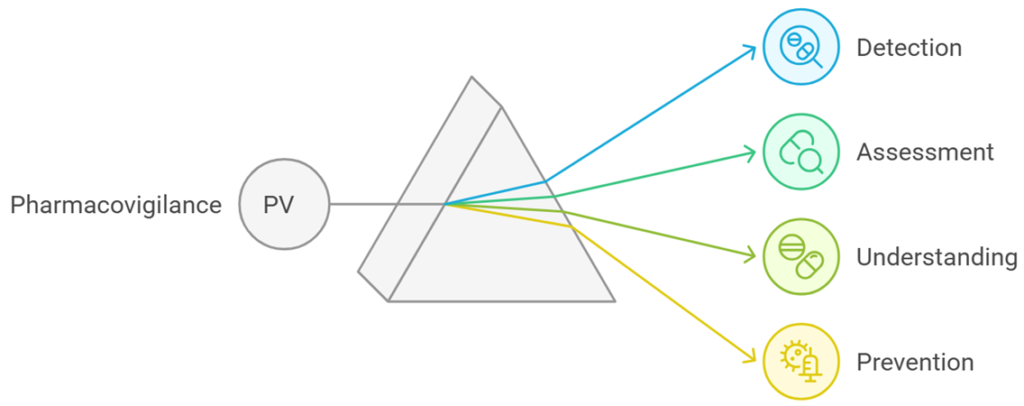Pharmacovigilance (PV) plays a vital role in healthcare by monitoring the safety of medicines and ensuring that their benefits outweigh any potential risks. It is a scientific discipline that involves the collection, detection, assessment, and prevention of adverse drug reactions (ADRs) and other drug-related problems. The goal of pharmacovigilance is to enhance patient safety by identifying and minimizing risks associated with pharmaceutical products.

Pharmaacademias.com
Why is Pharmacovigilance Important?
1. Early Detection of Adverse Drug Reactions (ADRs): Many medications can have unintended side effects, some of which may be severe. Pharmacovigilance helps in identifying these adverse reactions early.
2. Ensuring Patient Safety: By continuously monitoring drugs post-marketing, regulatory agencies and pharmaceutical companies can take necessary actions to prevent harmful effects.
3. Regulatory Compliance: National and international regulatory bodies, such as the FDA (USA), EMA (Europe), and CDSCO (India), require strict pharmacovigilance reporting to ensure drug safety.
4. Improvement of Drug Formulations: If certain drugs show frequent side effects, pharmaceutical companies can reformulate them to enhance safety and efficacy.
5. Public Health Protection: Pharmacovigilance contributes to public health by preventing widespread medication-related harm and ensuring that only safe drugs remain in circulation.
Who is Responsible for Pharmacovigilance?
Pharmacovigilance is a shared responsibility involving multiple stakeholders, including:
Healthcare Professionals (Doctors, Pharmacists, Nurses) – They report ADRs and educate patients.
Pharmaceutical Companies – They conduct clinical trials and post-marketing surveillance.
Regulatory Agencies – They enforce drug safety regulations and monitor reported ADRs.
Patients – They play a key role by reporting side effects and ensuring medication adherence.
Download Pharmacovigilance Notes
To help you understand pharmacovigilance better, we have prepared comprehensive notes covering key concepts, ADR reporting methods, signal detection, case studies, and regulatory frameworks.


